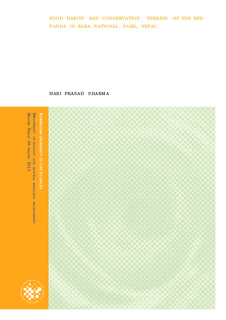Food habits and conservation threats of the red panda in Rara National Park, Nepal
Master thesis
Permanent lenke
http://hdl.handle.net/11250/187105Utgivelsesdato
2013-08-29Metadata
Vis full innførselSamlinger
- Master's theses (INA) [593]
Sammendrag
This thesis deals with issues of conservation threats to the red panda (Ailurus fulgens), specifically regarding foraging resources and anthropogenic activities i.e. livestock grazing.
I studied the diet components of red panda during the pre-monsoon and post-monsoon seasons of this herbivorous carnivore. I evaluated the diet of red panda through micro-histological study of fecal matters to determine the composition of diets. The results indicated that the red panda feeds primarily on bamboo (Thamnocalamus sp.) species, which comprised 90.6% and 77.8% of the volume of pre-monsoon and post-monsoon scats respectively, followed by minute consumption of Abis spectabilis, Rhododendron arboreum, Quercus semecarpifolia, Betula utilis, Tsuga dumosa, Acer acuminatum and Texus wallichiana. Seasonal fruits of Aconogonum sp., Juniperus indica, Sorbus cuspidata and mushrooms were found only in the post-monsoon season and comprised 13.8% of the volume of scats. This result indicated that the red panda is a bamboo specialist, explaining why it selects forest habitat with bamboo-dominated understory. I conducted a literature review to determine the degree to which bamboo was a part of the species’ diet throughout its range. I found that different species of bamboo were always of major importance, which suggests that factors negatively affecting the availability of bamboo can be an important threat for the species. Such factors include livestock grazing and other human-related factors and potentially bamboo die-off after mass flowering, as found with giant panda (Ailuropoda melanoleuca) in the mid-1970s.
Based on this, I investigated the effects of illegal grazing inside Rara National Park on the occurrence of red pandas. I found that livestock grazing had a small but significant adverse effect on red panda presence and that bamboo availability within a certain elevational range with water sources determined red panda occurrence.
